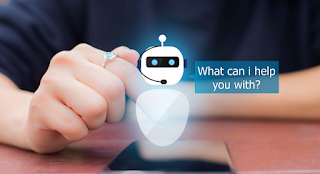Chatbots Market Growing Popularity and Emerging Trends to 2030
Chatbots Market Overview -
Chatbots have revolutionized customer service and are now an integral part of many businesses’ customer engagement strategies. A chatbot, also known as a virtual assistant or conversational agent, is a computer program that is designed to simulate human conversation. Chatbots can be used in a wide range of applications, from providing customer support to facilitating online purchases. Let's take a closer look at what chatbots are and how they work, as well as their advantages and limitations.
The Chatbots industry is projected to grow from USD 4.92 Billion in 2022 to USD 24.64 Billion by 2030
What are Chatbots?
Chatbots are computer programs that utilize artificial intelligence (AI) and natural language processing (NLP) technologies to simulate human conversation. They can be programmed to respond to customer queries, provide information, and perform automated tasks.
Chatbots typically utilize one of two types of AI: rule-based and machine learning. Rule-based chatbots follow predetermined rules and use predefined answers to respond to user input. Machine learning chatbots, on the other hand, use NLP and AI algorithms to understand the context and intent of user input to provide appropriate responses.
How Chatbots Work
Chatbots work by receiving user input in the form of written or spoken language. This can come via a text-based chat window or through voice recognition technology such as Apple's Siri or Amazon's Alexa. The chatbot then processes the input and uses AI algorithms to understand user intent and context before providing a response.
Advantages of Chatbots
Chatbots offer a number of advantages for businesses and customers alike:
24/7 Availability: Chatbots can be programmed to answer customer queries and provide support 24/7, improving customer satisfaction and experience.
Reduced Customer Service Costs: Chatbots can handle a high volume of customer queries and support requests, reducing the need for human customer support agents and thus cutting costs.
Improved Efficiency: Chatbots can provide instant, automated responses to customer queries, improving the speed and efficiency of customer support.
Consistency: Chatbots can provide consistent answers to customer queries, eliminating the possibility of variations in response due to human error.
Availability on Multiple Platforms: Chatbots can be embedded in company websites, social media platforms, and messaging apps, allowing easy access to customers across multiple platforms.
Browse In-depth Market Research Report (100 Pages) on Chatbots Market
Limitations of Chatbots
While chatbots offer many benefits, they also have some limitations:
Limited Human Touch: Chatbots lack the ability to offer a human touch and may not be able to handle complex requests or nuanced customer inquiries.
Language Limitations: Chatbots may struggle to understand customer input in certain languages or dialects
Related Reports
In-Game Advertising Market - The In-Game Advertising market is projected to grow from USD 8.2 Billion in 2023 to USD 20.7 Billion by 2032
Strategy Consulting Market - The Strategy Consulting market industry is projected to grow from USD 48.5 Billion in 2023 to USD 67.6 billion by 2030
Service Lifecycle Management Market - The Service Lifecycle Management market industry is projected to grow from USD 2.06 Billion in 2023 to USD 4.09 billion by 2032

Comments
Post a Comment